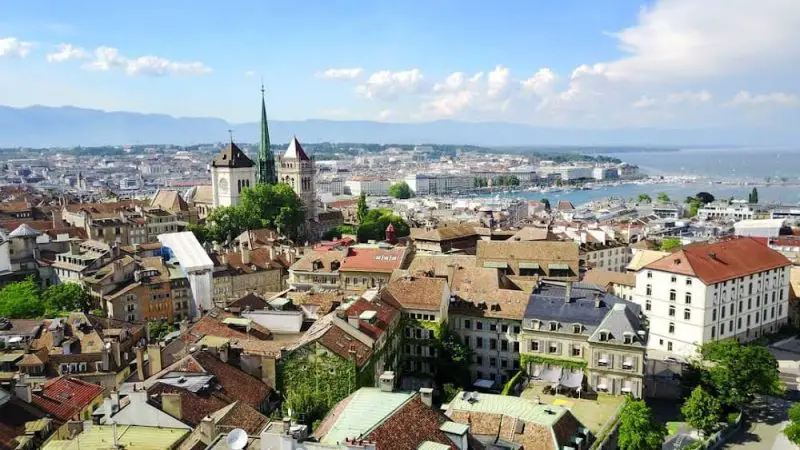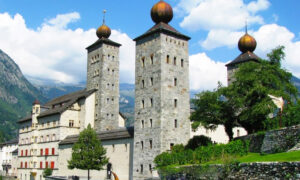Switzerland is a small and modest country. It doesn’t hit the news very often, and to be honest, Swiss news is usually the opposite of exciting. But when we take a closer look and learn some interesting facts about Switzerland, we find out that it is a fascinating and unique country.
Interesting Facts About Switzerland
1. About 8 million people live in Switzerland. It is one of the smallest countries in Europe.
2. Switzerland does not formally have a capital. However, its de facto function is performed by Bern. The largest city is Zurich.
3. The highest mountain in Switzerland is the Dufourspitze (Monte Rosa), but the most popular is the Matterhorn (4,478 meters).
4. There are 1,484 lakes in Switzerland, the largest of which is Lake Geneva (Lac Leman), although its southern shore is in France.
5. Switzerland is probably the largest producer of chocolate in the world.
6. Football and hockey are the most popular sports in Switzerland.
7. One of the most famous monuments of Switzerland is the Geneva Jet d’Eau – water fountain. On an average day, it shoots about 500 liters of water per second at 200 km/h.
8. It has 4 official languages: German, French, Italian and Roman. This does not mean that every Swiss speaks more than one language, but most do.
9. The currency of Switzerland is the Swiss franc.
10. Switzerland has one of the lowest crime rates in industrialized countries despite liberal Swiss gun laws. In 2015, there were only 0.5 gun homicides per 100,000 people (about 40 per year), compared to 5 gun homicides per 100,000 people in the United States in 2014 (about 30-40 per day).
11. A study on small arms estimates that Switzerland has about 45.7 guns per 100 inhabitants, making it third in the world after the US (88.8) and Yemen (54.8), although the Swiss government estimates that there is one gun for every 4 inhabitants, or about 2 million guns for a population of 8.3 million people. In 2011, Swiss voters rejected stricter gun control, including a proposal to ban the purchase of automatic weapons and introduce a firearms licensing system.
12. One of the pillars of Switzerland is dairy farming and this country has some of the best cheeses.
13. Winters are long and snowy in the mountains, while the valleys are covered with fog and rain. Summers are usually mild.
14. Switzerland is known for its high mountains, the Alps (in the south) and the Jura (in the northwest) with a central plateau of rolling hills, plains and large lakes. The Alps are a series of mountains separating Southern Europe from Northern Europe.
15. Jungfraujoch is the highest railway station in Europe with a height of 3453 meters.
16. Cresta Run Toboggan in St. Moritz was built in 1885 and is renewed every year with fresh ice.
17. Mont Dolent is a mountain located on the border of Italy and Switzerland, not far from the border with France. It is the only alpine peak shared by three countries.
18. The Swiss flag is made of a red cross on a white background. The Red Cross emblem was designed as the reverse of the Swiss flag in honor of Henry Dunant.
19. Switzerland is the only country after ancient Athens that practices direct democracy. Swiss citizens elect their representatives in national and local elections. But they also vote on everything from banning smoking in restaurants to renovating a museum or changing a local bus route. The Swiss vote more than any other nation in the world.
20. You will notice that cars from Switzerland have a “CH” sticker, not an “S” (taken by Sweden), or something that would resemble the word Switzerland, Suisse, Schweiz or Svizzera. Instead, they use the old “Helvetiqe Confederation” (Helvetiqe Confederation).
21. Carnival is very popular. In Basel, the biggest holiday, fasnachta, starts at 4.00 am on Ash Wednesday. Thousands of people dressed in costumes and masks play loud music for three days.
22. Switzerland was originally named Helvetia by Julius Caesar when he conquered the Helvetii, a group of Celtic tribes that inhabited the area between the Alps and the Jurassic Mountains.
23. The Swiss eat more chocolate than any other nation in the world, 11.3 kg per year.
24. One Swiss jeweler made a ring entirely of diamond, which sold for $ 68 million.
25. Foreigners make up about 23% of the Swiss population.
26. Swiss chemist Albert Hoffman made the first trip with LSD in 1943, conducting tests for a cure for migraines when he accidentally absorbed the LSD compound through his fingertips.
27. In 2007, Switzerland accidentally attacked neighboring Liechtenstein.
28. In Switzerland there is a lawyer, Antoine Goetschel, who represents animals in court. He even chased a fisherman once for fishing too long pike.
29. For around 450 years, the most famous Swiss export skill was soldiering. Between 1400 and 1848, it is estimated that more than 2 million Swiss mercenaries were employed by foreign powers.
30. According to the Economist Intelligence Unit’s Quality of Life Index, Switzerland is the best place to be born. This includes employment, crime rate, quality of life, health care, happiness, etc.
31. In the event of a nuclear war, the Swiss have bunkers that can accommodate the entire population.
32. Also in the event of war, they can easily convert their highways into landing lanes, thus removing the step separation.
33. The Swiss franc is the official currency of Switzerland.
34. Geneva, Switzerland is also home to the second largest of the four major United Nations offices.
35. Half of the luxury watches produced in the world come from Switzerland. Brands like Tissot, TAG Heuer, Rolex, Patek Philippe and Longines are all Swiss.
36. Large Hadron Collider, LHC – the world’s largest particle accelerator, located at the European Center for Nuclear Research CERN near Geneva
37. Euthanasia is legal in Switzerland. It is also legal in China, Belgium, Canada and several other countries. However, there are different laws regarding the circumstances in which it is legal.
38. Switzerland supplies its citizens almost only with environmentally friendly electricity. 39% of electricity comes from nuclear power plants and 56% from hydro power plants.

